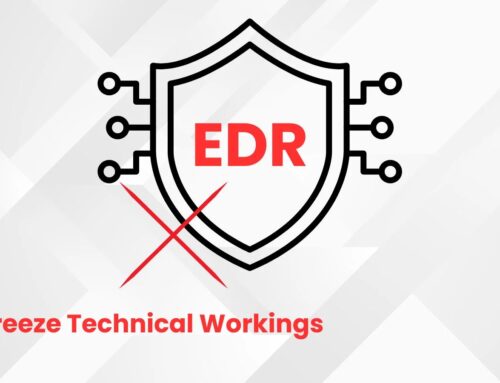
Axis Camera Server Vulnerabilities Exposes Thousands of Organizations to Attack
Unmasking the Threat: Critical Axis Camera Server Vulnerabilities Expose Thousands of Organizations
The silent sentinels of our physical security infrastructure – surveillance cameras – are often assumed to be robust and impermeable. However, recent disclosures have shattered this illusion, revealing a critical security crisis within Axis Communications’ widely adopted surveillance products. Over 6,500 organizations globally, from government agencies and educational institutions to Fortune 500 companies, find themselves precariously exposed to sophisticated cyberattacks. This isn’t merely a data breach risk; it’s a direct pathway for attackers to seize complete control over critical camera networks, underscoring the urgent need for awareness and immediate action.
The Four Flaws: A Deep Dive into Axis Surveillance System Vulnerabilities
The core of this widespread exposure lies within four distinct vulnerabilities identified in Axis Communications’ video surveillance products. These aren’t minor glitches; they represent fundamental weaknesses that could be exploited by malicious actors to compromise the integrity and confidentiality of surveillance systems. While specific technical details for each vulnerability are crucial for a complete understanding, the collective impact allows for:
- Unauthorized Network Control: Attackers could gain root access or administrative privileges, taking full command of affected cameras and their underlying networks. This could range from manipulating video feeds to deploying malicious software.
- Data Exfiltration and Manipulation: Compromised cameras could become conduits for exfiltrating sensitive data or even altering or deleting surveillance footage, hindering investigations and accountability.
- Lateral Movement Potential: A compromised camera can serve as a jumping-off point for attackers to move deeper into an organization’s network, leveraging the camera’s trusted position to access other systems and data.
These vulnerabilities, though detailed by researchers, have been assigned the following CVEs, signifying their severity and broad impact:
The Far-Reaching Impact: Who’s at Risk?
The widespread deployment of Axis security cameras means that the potential impact of these vulnerabilities is vast and varied. Organizations across virtually every sector rely on these systems for critical functions:
- Government Agencies: From public safety to critical infrastructure monitoring, compromised cameras could lead to surveillance breaches, operational disruptions, or even national security risks.
- Educational Institutions: Schools and universities utilize cameras for campus security and safety. Vulnerabilities could expose students and staff to threats or allow unauthorized access to sensitive areas.
- Fortune 500 Companies: Large enterprises depend on robust surveillance for intellectual property protection, asset security, and employee safety. Exploitation could lead to significant financial losses, reputational damage, and operational paralysis.
- Retail and Commercial Businesses: Stock tracking, customer monitoring, and theft prevention are common uses. Breaches here could lead to inventory losses, privacy violations, and security incidents.
- Healthcare Facilities: Patient safety and sensitive data security are paramount. Compromised cameras in healthcare settings pose severe risks to patient privacy and facility operations.
The sheer number of affected organizations – over 6,500 – underscores the global scale of this security challenge. It is not an isolated incident but a systemic vulnerability that demands immediate attention.
Remediation Actions: Securing Your Axis Camera Infrastructure
Proactive and timely action is paramount to mitigate the risks posed by these Axis camera server vulnerabilities. Organizations must implement a robust remediation strategy immediately:
- Patching and Firmware Updates: The most critical step is to apply all available security patches and firmware updates released by Axis Communications. Always verify the authenticity of updates from official channels.
- Network Segmentation: Isolate IP camera networks from your primary operational networks. This limits lateral movement for attackers, preventing a camera compromise from escalating to a full network breach.
- Strong Authentication and Access Control: Enforce strong, unique passwords for all camera accounts, and implement multi-factor authentication (MFA) where supported. Regularly review and revoke unnecessary access privileges.
- Disable Unnecessary Services: Review camera configurations and disable any services or ports that are not strictly necessary for operation. This reduces the attack surface.
- Regular Vulnerability Scanning: Conduct routine vulnerability scans of your surveillance infrastructure to identify weaknesses and misconfigurations.
- Intrusion Detection/Prevention Systems (IDPS): Deploy IDPS solutions capable of monitoring network traffic for suspicious activity related to camera communications, detecting potential exploitation attempts.
- Logging and Monitoring: Ensure comprehensive logging is enabled on all cameras and central management systems. Integrate these logs with a Security Information and Event Management (SIEM) system for centralized monitoring and alert generation. Regularly review logs for anomalies.
- Physical Security: Do not overlook the physical security of cameras and network equipment. Prevent unauthorized physical access to devices.
Tools for Detection, Scanning, and Mitigation
Leveraging the right tools can significantly aid in identifying and addressing these vulnerabilities. Below is a table of commonly used tools that could be applicable:
| Tool Name | Purpose | Link |
|---|---|---|
| Nessus | Comprehensive vulnerability scanning and auditing. | https://www.tenable.com/products/nessus |
| OpenVAS / Greenbone Vulnerability Management (GVM) | Open-source vulnerability scanning and management. | https://www.greenbone.net/ |
| Shodan | Search engine for internet-connected devices, useful for identifying public-facing cameras. | https://www.shodan.io/ |
| Wireshark | Network protocol analyzer for deep packet inspection and suspicious traffic detection. | https://www.wireshark.org/ |
| Metasploit Framework | Penetration testing framework; may contain modules for exploiting known camera vulnerabilities (use responsibly for testing). | https://www.metasploit.com/ |
Key Takeaways: Fortifying Your Digital Defenses
The Axis camera server vulnerabilities serve as a stark reminder that every connected device can be a potential entry point for attackers. The proliferation of IoT devices, including surveillance equipment, expands the attack surface for organizations of all sizes. Prioritizing robust cybersecurity practices is no longer an option but a necessity.
Organizations must embrace a proactive security posture, emphasizing:
- Patch Management: A disciplined approach to applying security updates across all systems.
- Network Security: Implementing segmentation, firewalls, and intrusion detection to control traffic flow.
- Asset Management: Knowing what devices are on your network and their configurations.
- Regular Auditing: Continuously assessing your security posture for weaknesses.
- Employee Training: Educating staff about security best practices and common attack vectors.
By understanding the risks and acting decisively, organizations can significantly reduce their exposure to these and future cyber threats, safeguarding critical infrastructure and sensitive data.





